Lucca, Italy, is a little town with a lot to offer. Nicknamed "The Town Of A Hundred Churches," it has much to offer a lover of religious history. There are also ample art galleries, political museums, beautiful gardens, and perfectly preserved Medieval architecture. Below, we'll show you many top attractions of Lucca and let you in on some top tips for a great visit!
When To Visit
Although Lucca isn't a coastal city, it's only 30 kilometers from the western coast of Italy. This means Lucca will be most crowded during the peak summer months of June, July, and August. The best time to visit this wonderful place is spring and fall.
There are two festivals that you may want to keep in mind - to either be sure to attend or be sure to avoid! The Lucca Summer Festival is the largest music festival in Tuscany and takes place in July. The Lucca Comics and Games convention is the world's second-largest gathering for comics, games, and cosplay lovers.
Top Attractions
Piazza dell Anfiteatro
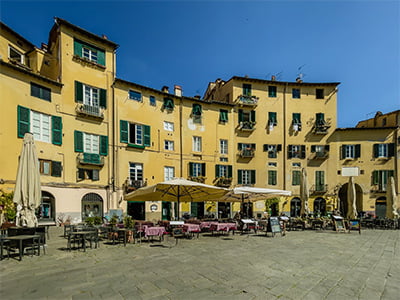
Source: Unsplash
This beautiful square (although it's actually round) was built right on top of the ruins of an ancient Roman amphitheater. While you won't see any of the ruins themselves, the shape of the plaza and the buildings around it give the nod to its earliest use. The curved buildings are of different heights and colors, creating a welcoming open space. The Piazza dell'Anfiteatro is home to fantastic restaurants and cafes and hosts numerous concerts.
Church of San Michele in Foro
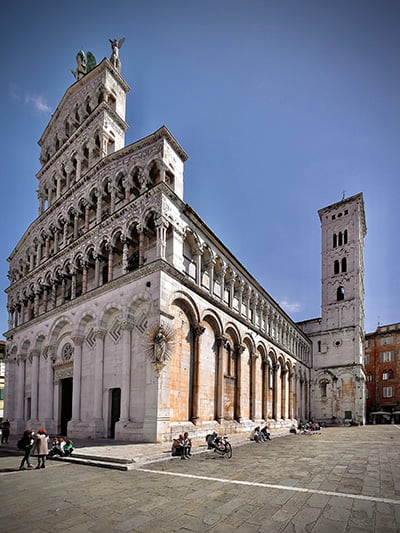
Source: Unsplash
San Michele in Foro is a beautiful church found in the center of Lucca, in the square of the same name (Piazza San Michele). The church and square are dedicated to St. Michael the Archangel, and an immense statue of the saint sits atop it. It was built in the 12th century of Carrara marble, covered in ornamentation, and the interior has a more simple design dating back to Roman times.
Duomo di San Martino
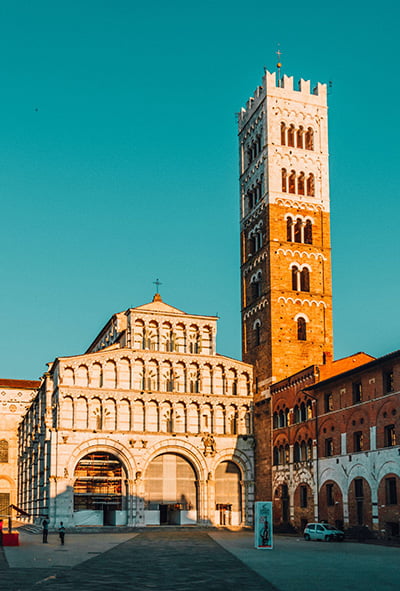
Source: Unsplash
The Lucca Cathedral, or Duomo di San Martino, is a stunning Romanesque cathedral built in the 11th century and finished in the 14th century. Well, partially finished - the bell tower was only partially completed, and you can see where the work stopped in covering the bricks. The outdoor facade is richly decorated, but the interior is what is really impressive. The ceiling is covered with beautiful mosaics, and religious travelers will want to see the Volto Santo - a wooden crucifix purported to have been made by a miracle, not by humans.
Torre delle Ore
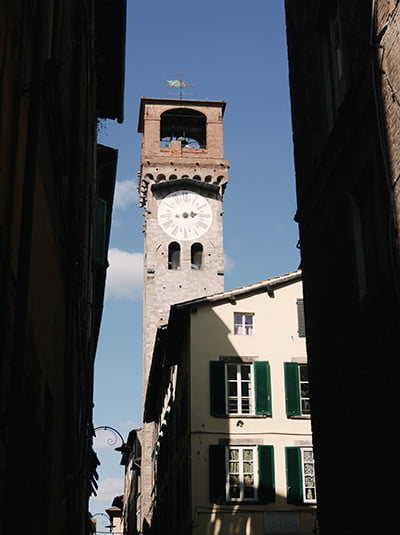
Source: Unsplash
This clock tower is the actual tallest tower in Lucca, built in the Middle Ages specifically to mark the time of day with its clock and bells. A fascinating legend states that a woman sold her soul to the devil for beauty and youth, and the devil was to come back in thirty years to collect payment. At the end of the thirty years, the woman ran up the strenuous set of stairs in an attempt to stop the bell from ringing at midnight and marking her death. As the legend goes, she didn't reach the bell in time, sadly.
Lucca City Walls
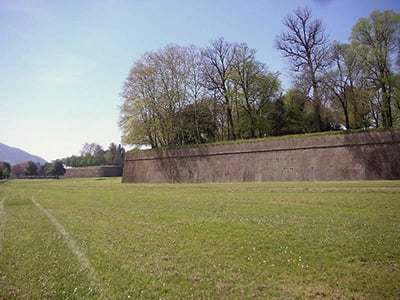
Source: Flickr
Many Medieval and Renaissance-era cities were walled as the main line of defense, and you can still see a completely preserved length of the Medieval walls that once surrounded Lucca, Italy. This wall section entirely surrounds the historic old town of Lucca and features six ancient city gates. A tree-lined pedestrian promenade spanning the entire 4 kilometers has been built along the top of the city walls, which many joggers and walkers enjoy.
Palazzo Mansi
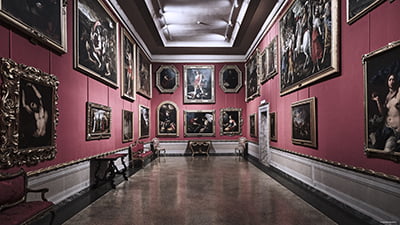
Source: Flickr
This palace-turned-museum is a real must-see in Lucca. It is a national museum and features rooms filled with frescoes, ancient furniture, and beautiful tapestries. Here, you'll find the Salone della Musica, the Hall of Mirrors, and paintings from the personal collections of the Medici family and the Grand Duchy. Tours of the entire villa and grounds are available.
Palazzo Pfanner
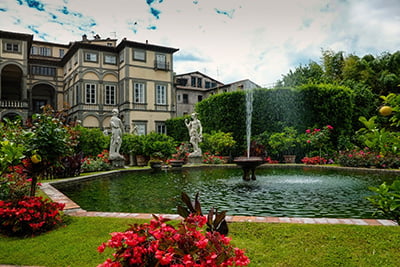
Source: Flickr
Another mansion turned into a museum, and the Palazzo Pfanner has a Baroque garden filled with statuary and fountains and houses a small but highly curated collection of costumes and jewelry from the 18th and 19th centuries.
Puccini Birthplace Museum
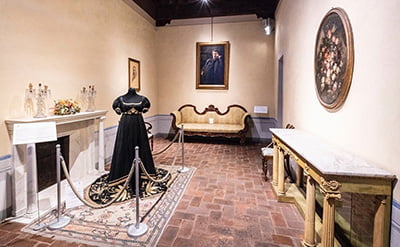
Source: Flickr
The famous opera composer Giacomo Puccini was born and raised in Lucca, and his birthplace in the Casa di Corte San Lorenzo has been turned into a museum. Music fans can enjoy collections of photographs, manuscripts, and opera costumes.
Basilica of San Frediano
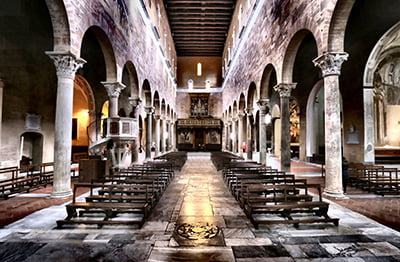
Source: Flickr
The third of Lucca's most beautiful churches are Saint Frediano's Basilica. A gold mosaic of Christ and the twelve apostles decorates the front of the church. The baptismal font inside is truly a work of art, with reliefs depicting the life of Moses around the outside. It houses the body of Saint Zita, the patron saint of Lucca.
Torre Guinigi
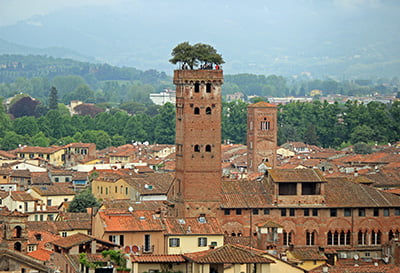
Source: Unsplash
The Guinigi tower is an interesting, tree-topped tower located in the historic center of Lucca. In the 14th century, towers were considered a symbol of status and power. By planting oak trees atop this tower, the Guinigi family could claim the Guinigi tower as the highest tower in Lucca.
Piazza Napoleone
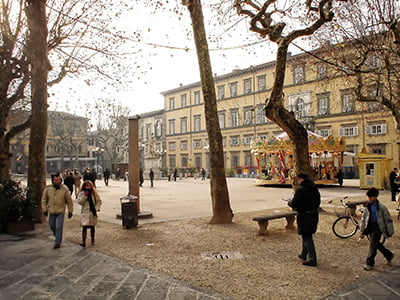
Source: Flickr
Not far from the Piazza dell'Anfiteatro is the Piazza Napoleone, or the square of Napoleon. In the center is a masterful statue of Maria Luisa, an important citizen of Lucca. One entire square side is filled with the Palazzo della Provincia, where Napoleon's sister lived. The other side holds the Museo del Risorgimento, a museum of the political history of the Italian unification movement. The Piazza Napoleone is also the location of the Giglio Theatre.
Sortie San Paolino
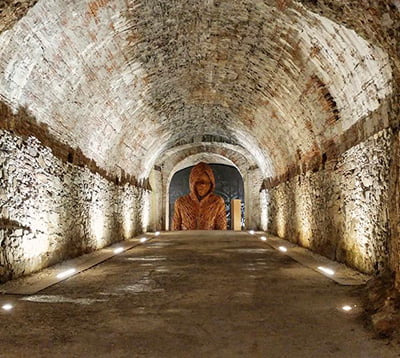
Source: Flickr
If you want to enjoy a piece of Lucca that's off the beaten path, then the Sortie San Paolino is the place for you. It's the ancient underground tunnel system of the old city walls! It serves as the host to many cultural events and art exhibits, which lend to its otherworldly atmosphere.
Nottolini Aqueduct
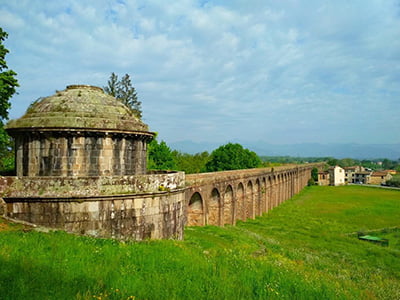
Source: Flickr
Here is a marvel of architectural achievement! This stone aqueduct carried water from the mountains over 3 kilometers into Lucca, Italy, and it still stands in its entirety!
Things To Do
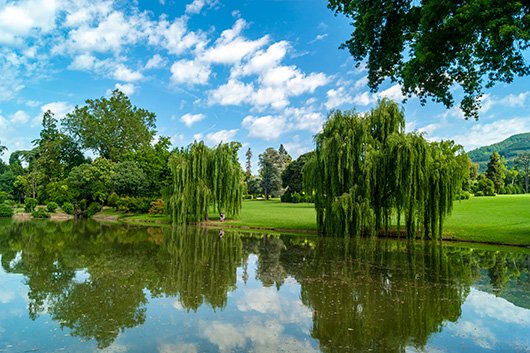
Stroll Through Gardens
There are many places to stroll along and enjoy the landscape in Lucca, Italy. The largest is the Botanical Garden, established in 1820 by the Duchess of Parma. The gardens are expansive, but they also include greenhouses, an arboretum, a herbarium, and several water features that seem popular with turtles. However, there are villas with gardens all around Lucca, both in and out of city limits, and Villa Reale di Marlia is definitely worth a visit.
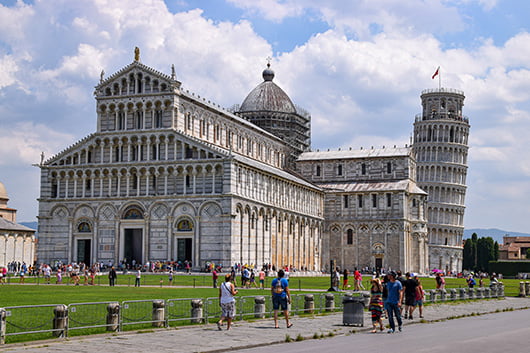
Take A Day Trip
One of the appeals of Lucca, Italy, is that it's situated midway between Pisa and Florence. This means that you can easily enjoy day trips to either of the two cities! Go see the Leaning Tower of Pisa, the Uffizi Gallery, or Michaelangelo's famous statue of David! Or, travel north to the Parco Alpi APuane for some hiking and rock climbing opportunities.

Enjoy Good Food And Fine Wine
It's no secret - there is some delicious food in Italy. For local restaurants serving up authentic cuisine, try:
Osteria da Rosolo - With a prime location between Piazza Napoleone and Piazza San Michele, this restaurant is not to be missed. It specializes in seafood but serves many pasta dishes as well.
La Bottega di Anna e Leo - Besides, the San Frediano church is a restaurant that looks straight out of an Italian countryside cottage. The food is simple, rustic, and delicious.
L'Imbuto - For a more experimental restaurant, try this location found inside the Palazzo Pfanner. There is no fixed menu - the chef creates new works of art each day.
Vinni Liquori Vanni - While the food here is delicious, the real attraction is the extensive wine cellar underneath. Upon request, you can even take a tour and enjoy wine tastings. A top destination for any wine connoisseur.
Where to Stay
You'll need to decide if you'd rather stay inside or outside the city center walls. The historic center is picturesque, but you won't find big hotels there.
You'll find bed & breakfast and boutique hotels (which can be pricey) here. If you have a car, staying outside the walls where parking is readily available may be best.
Where Is Lucca Located?
In the northern Tuscany region of western Italy lies Lucca, a historical city halfway between Pisa and Florence. It was a Roman colony originally, then became an independent republic before being conquered by Napoleon and eventually becoming part of a unified Italy.
How To Get To Lucca, Italy
Lucca is well connected to Pisa and Florence through main highways and railroad lines. Many airlines fly into the airports at Pisa and Florence. From there, you can take a rented car or a bus and travel to Lucca on the A11. By taking a bus, you'll avoid the hassle of finding parking outside the walls!
It's easiest to get to Lucca by train, however. You'll be beholden to the train schedule, but the trains run regularly. The Lucca train station is found in Piazza Ricasoli, and is situated along the train lines that run from Florence to Viareggio and from Florence to Pisa.
Transport Within
Public Transportation
There are trains and buses available for transportation outside of the city. They are also great options to travel to other areas of Tuscany and cities.
Taxi
The main and easy transportation method to travel within the city is taxis, and Uber is not available in this area.
Car Rental
When it comes to private transportation and flexibility, a car rental is your best option. They will give you complete freedom to explore the region. However, remember that the old center is closed off to traffic, and many areas that allow cars are exclusively reserved for residents, so marking can be difficult.
Bike
Lucca is small and flat, so it's easy to navigate by bike. The city is very bike friendly, and there are many bike reserve areas. Not to mention, you will blend right in with the locals as there are no locals who live in Lucca who don't have a bike.
There are plenty of bike shops both outside and inside the city wall. You can rent these bikes by the hour or pay a daily price.
Walk
Lucca is pedestrian friendly! So if you don't have to take a car, bus or bike, walking is a great option to enjoy Lucca. Since many streets don't allow cars, you can enjoy a nice stroll. Lucca, however, the street can be hard to navigate as its layout is quite random and organic.
Things To Know Before You Visit Lucca
Cars Stay Out
The old city walls clearly demarcate the modern city from the historic old town. Cars aren't allowed in the historic center, so plan to park outside the walls. Paid private parking is readily available, and some areas have free public parking. Thankfully, the whole city is designed for foot traffic. It may be difficult to explore the entire charming city on foot quickly, but if you have a few days and sleep in a central location, it's not too difficult to ditch the car.
Every Alley Is A Postcard
Get your camera ready because every alley in Lucca is a postcard. The warm yellows and oranges, rich turquoise, and deep emerald dominate Lucca's palette.
A Ton Of Artisan Shops
If you are a foodie, then you are in luck because there are a ton of shops and bakeries in Lucca that will satisfy your desires and needs.
